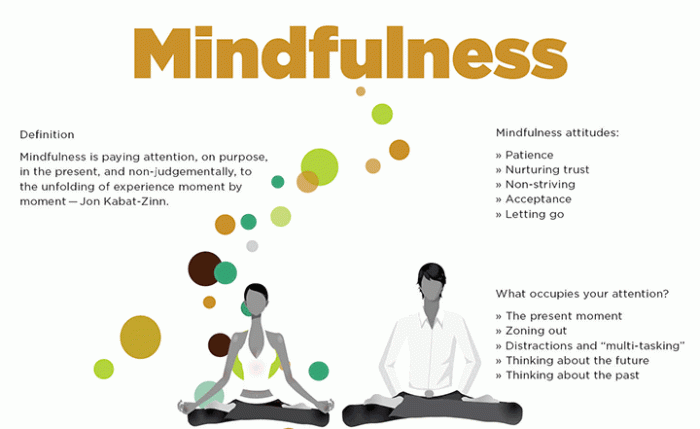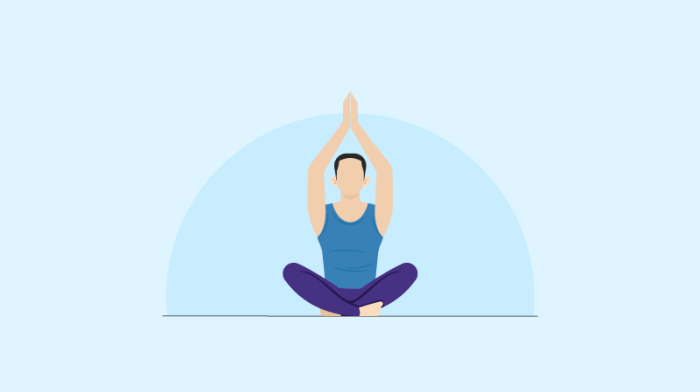Mindfulness Exercises, a key to unlocking inner peace and mental clarity, are all the rage nowadays. From reducing stress to improving focus, these practices offer a holistic approach to well-being that is worth exploring.
Whether you’re a newbie or a seasoned practitioner, diving into the world of mindfulness exercises can bring a wave of positive change into your life.
What are Mindfulness Exercises?
Mindfulness exercises are a type of meditation practice that involves focusing your mind on the present moment without judgment. Unlike other forms of meditation that may involve clearing your mind completely, mindfulness exercises encourage you to be aware of your thoughts, feelings, and surroundings.
Practicing mindfulness exercises has been shown to have numerous benefits for mental health and well-being. It can help reduce stress, anxiety, and depression, improve focus and concentration, increase self-awareness and self-compassion, and enhance overall emotional regulation.
Benefits of Mindfulness Exercises
- Reduce stress and anxiety levels
- Improve focus and concentration
- Increase self-awareness and self-compassion
- Enhance emotional regulation
Popular Mindfulness Exercises
- Mindful Breathing: Focus on your breath as you inhale and exhale, bringing your attention back whenever it wanders.
- Body Scan: Slowly scan your body from head to toe, bringing awareness to each part and any sensations you may feel.
- Mindful Walking: Pay attention to each step as you walk, feeling the ground beneath your feet and the movement of your body.
Mindfulness Exercises Techniques

To fully benefit from mindfulness exercises, it’s essential to understand the various techniques that can be used to practice mindfulness effectively. These techniques include focused attention, open monitoring, and loving-kindness meditation. Each technique offers unique benefits and can be incorporated into daily routines for maximum effectiveness.
Focused Attention
- Focused attention involves concentrating on a specific object, thought, or sensation, such as your breath or a mantra.
- By directing your focus on a single point, you can cultivate awareness and develop the ability to stay present in the moment.
- Practice focused attention by gently bringing your mind back to the chosen focal point whenever it wanders.
Open Monitoring
- Open monitoring involves observing your thoughts, emotions, and sensations without judgment or attachment.
- By remaining open and receptive to whatever arises in your awareness, you can develop a deeper understanding of your inner experiences.
- Practice open monitoring by simply noticing and acknowledging whatever comes up in your mind without trying to change it.
Loving-Kindness Meditation
- Loving-kindness meditation focuses on cultivating feelings of love, compassion, and goodwill towards yourself and others.
- By sending positive intentions and well-wishes to yourself and others, you can promote emotional well-being and strengthen interpersonal relationships.
- Practice loving-kindness meditation by repeating phrases of loving-kindness and visualizing the happiness and well-being of yourself and others.
Integrating Mindfulness into Daily Routines
- Start your day with a short mindfulness exercise, such as mindful breathing or body scan, to set a positive tone for the day.
- Take mindfulness breaks throughout the day to pause, breathe, and refocus your attention on the present moment.
- Incorporate mindfulness into daily activities like eating, walking, or washing dishes by bringing full awareness to each action.
Basic Mindfulness Exercise for Beginners
- Find a quiet and comfortable space to sit or lie down.
- Close your eyes and take a few deep breaths to center yourself.
- Focus on your breath as it moves in and out of your body, noticing the sensations of each inhale and exhale.
- Whenever your mind starts to wander, gently bring your attention back to your breath without judgment.
- Continue this practice for a few minutes, gradually increasing the duration as you become more comfortable with mindfulness.
Mindfulness Exercises for Stress Reduction

Mindfulness exercises can be a powerful tool in reducing stress levels and promoting relaxation. By focusing on the present moment and cultivating awareness, these practices can help individuals manage their stress more effectively.
Progressive Muscle Relaxation, Mindfulness Exercises
Progressive Muscle Relaxation is a mindfulness exercise that involves tensing and then relaxing each muscle group in the body, one at a time. This technique helps release physical tension and promotes a sense of calmness and relaxation throughout the body. It can be particularly beneficial for individuals who carry stress in their muscles.
Gratitude Meditation
Gratitude Meditation is another mindfulness exercise that focuses on cultivating feelings of gratitude and appreciation. By taking a few moments each day to reflect on the things we are grateful for, we can shift our focus away from stressors and towards positive aspects of our lives. This practice can help reduce stress levels and increase overall well-being.
Science Behind Mindfulness and Stress Response
The science behind mindfulness practices and their impact on the body’s stress response lies in the activation of the parasympathetic nervous system, also known as the “rest and digest” system. When we engage in mindfulness exercises, such as deep breathing or body scans, we activate this system, which helps counteract the body’s stress response. By regularly practicing mindfulness, individuals can train their bodies to respond to stress in a more adaptive and healthy way.
Mindfulness Exercises for Improved Focus and Concentration
Mindfulness exercises are not only beneficial for reducing stress but also for enhancing focus, concentration, and cognitive performance. By practicing mindfulness, individuals can train their minds to stay present, improve attention span, and boost productivity in various tasks.
Examples of Mindfulness Exercises for Improved Focus:
- Body Scan Meditation: This exercise involves focusing on different parts of the body, starting from the toes and moving up to the head. By paying attention to each body part, individuals can improve their ability to concentrate and stay present.
- Deep Breathing: Taking deep breaths and focusing on the sensation of breathing can help calm the mind and enhance concentration. This exercise can be done anytime, anywhere, to regain focus and clarity.
- Mindful Walking: By walking slowly and deliberately, paying attention to each step and the sensations in the body, individuals can improve their focus and awareness of the present moment.
Long-Term Benefits of Mindfulness Exercises for Cognitive Enhancement:
Making mindfulness exercises a part of daily routines can have lasting effects on cognitive function. Over time, individuals may experience improved memory, sharper focus, better decision-making skills, and enhanced creativity. By incorporating mindfulness practices into daily life, individuals can optimize their cognitive performance and overall well-being.
